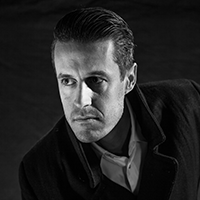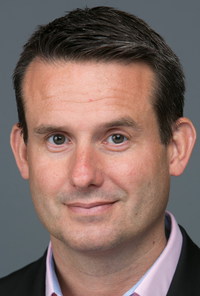Action Items for Improving Team Efficiency
 After more than two decades of working with small, agile teams who represent large, multi-billion dollar companies, I’ve learned a few things. Most notably, in every single relationship known to man, communication is the single most critical element when it comes to working efficiently with others.
After more than two decades of working with small, agile teams who represent large, multi-billion dollar companies, I’ve learned a few things. Most notably, in every single relationship known to man, communication is the single most critical element when it comes to working efficiently with others.
And we can be better at it.
Below are five practical ways to improve team efficiency from some of the brightest minds in the business. We’re talking MIT, CalTech, and Harvard Business Review. Nuf said!
But first, a quick warm-up:
According to The New Science for Building Great Teams, Alex Pentland outlines three key communication dynamics that affect performance – Energy, Engagement, and Exploration. I’m going to add a fourth – one that’s popping up on the radar quite a bit these days – Empathy.
Empathy has the power to create healthier teams on its own, even to a greater degree than Pentland’s top three dynamics. It can be a powerful addition to any leader’s toolbox. And as we ease into an era where brand continues to lose control to the people, leaders would be wise to embrace it and allow others to rise to the top. After working with C-level executives for more than 20 years, I’ve learned that empathy is one of the most difficult attributes to master.
Okay, let’s get to it.
Here are a few simple action items that can help you weave the four “E’s” into your teamwork dynamic.
Action Item #1: Communicate Frequently
A comprehensive seven-year study conducted by the folks at MIT — involving 2,500 participants across 21 organizations — shows that frequent communication via face-to-face and phone interaction are attributes of the highest performing team members.
Makes sense, right? Especially when (if you paid attention in Biology class) understanding that pheromones — those magical scents that impact the behavior of people in the same room— can only take flight when you’re meeting face-to-face with another.
So, what about video conferencing? Sure, it’s a convenient way to communicate, but it’s also far less effective for most groups. That said, if you have more than two people in a meeting, turn off the video and go with audio only. This will eliminate those visual distractions we all know and love…like your CEO’s lick-happy lap dog or the Marketing Director’s toddler bulldozing into the room.
Action Item #2: Form Mini Teams
Keep your teams lean and tight. According to Pentland, “teams of less than nine members performed at higher levels than larger teams.”
In my experience, teams of four to six operate most efficiently.
“Not long ago, German software giant SAP blew up the management framework for its 20,000-person development department and replaced it with mini-teams.” The result: “product development time was cut nearly in half over a three-year period.” Keep in mind, this an opportunity for leaders to exhibit humility as they let others take the wheel. It will be risky, but will ultimately establish trust and ROI, two virtues any leader would say are exponentially more valuable than the risk of making mistakes.
Small Groups vs Mini-Teams:
Make sure you’re forming small teams by electing a leader, delegating goals for each member, and working on problems as a group. Also, be sure to schedule regular team check-ins to intentionally announce progress. According to The Power of Small Wins, reporting on progress is shown to increase efficiency more than incentives through rewards. It’s called the Progress Principle, something most leaders often miss. Instead, they tend to focus on overworking and over-rewarding teams rather than allowing people to breathe and work at their own pace. This would allow the team’s progress to set the momentum and improve its capacity to finish strong.
Action Item #3: Elect a Devil’s Advocate
The classic “naysayer” (often an analyst, engineer, or operations staffer), believe it or not, plays a critical role in a team’s efficiency. So, make sure you identify this individual early and ensure they play an active role. Often, simply allowing them to feel comfortable and be themselves is all it takes to help them fully engage.
Naysayers will help to keep team discussions within the guardrails, put a halt to conversations that get off track, and ask hard questions like “Why are we doing this in the first place?” Having this bold voice is especially important in discussions involving executive stakeholders, where most team members may not have the gumption to put the kibosh on a flimsy idea, wayward project, or admit that they’re headed in the wrong direction.
Action Item #4: Actively Pursue Partying & Socializing
“Common sense tells us that team members must spend a lot of time together, scheduled and unscheduled. Busy executives and managers often minimize the time they spend together.” This critical nature of social time as a principle of efficiency and creativity, should not be flippantly brushed-aside. So make it a point to get out of the office with your team and mix it up. Ensure that you lead well by celebrating big wins and product launches but — more importantly — actively and intentionally pursue downtime together. Socializing in a neutral environment can be known to catalyze conversation that isn’t necessarily centered on a given project, but will result in innovative solutions to hard-to-solve problems when all return to the office.
According to the MIT study referenced above, social time is deeply critical to team performance, “often accounting for 50% of positive changes in communication patterns.”
Action Item #5: Be Energetic & Overcommunicate
We’ve all heard the phrase “less is more.” Well, when it comes to communication, more is more. Overcommunicating is ALWAYS better than not communicating enough. Of course, this can be especially difficult for designers, developers, and engineers or teammates who consider themselves introverts. For those of you who follow personality rubrics, these would be the INFPs/INTJs, the Enneagram 6 and 9’s, and the “S” and “C” people in DISC. And don’t forget those who come from cultures that are built on indirect communications versus direct. Pssst, that’s more than half the world (Asia and India)! This needs to be a serious consideration for leaders and managers.
Because most people tend to under-communicate — such as neglecting to use Cc, Bcc, Reply-all when sending emails — it’s important to help our teams understand that a healthy dose of communication never hurt anybody. In fact, if only a few team members adopt this level of “energetic communication”, efficiency has been shown to suffer. According to the MIT study, all members need to exhibit energetic communicating often!
Over the years, I’ve had the pleasure and fortune of working with many gifted people, but few are more energetic than Tyron Akal, my top Account Executive. He always calls and never apologizes for it. He rarely hits me up on Slack, and almost never sends a text without trying to call first. Simply put, Tyron communicates with the energy of a hydrogen bomb. And I love it!
As a result, Tyron and I are consistently aligned! It’s certainly no coincidence that Tyron is now the single best performing Account Exec we’ve had in the history of La Visual.
Never Wait to Communicate
Remember, the goal is to not to simply execute these action items, but master them. Once you’ve done that, your team can move towards tacit communication. This kind of unspoken fluidity within a team is shown to happen organically with teams that have been working together for an extended period of time. In fact, a recent study on top performing League of Legends teams showed precisely that. The highest performers acted with a sense of Collective Intelligence (CI) and executed tasks without chatting or speaking over the intercom.
Years ago, we had a team of six that did this exceptionally. We presented a new Corporate Identity to Barry Diller, CEO, and Chairman of IAC. This holding company owned brands like Expedia, Angie’s List, Vimeo, and Homeadvisor and about two dozen additional internet brands. We nailed the presentation, had no revisions, and all stakeholders were aligned. It was a huge win! A lot of it had to do with our ability to operate as a small unit over time and develop that kind of tacit fluidity with each other.
If you can keep your teams together long enough, you may be able to achieve a sense of fluidity that gives you some flexibility to break the rules a bit and start to strategically leverage Slack and remote days more effectively.
Until then, make sure you collaborate in person and sniff the fresh scent of success!
Braven Greenelsh. As a serial entrepreneur, investor and executive leader, Braven's expertise is creating brands and businesses that flourish. Leveraging over fifteen years of experience as a partner to scores of tech startups and enterprise-level corporations, his unique skill set offers value-add to any institutional fund, holding company or brand that needs to get a company launched. Throughout his career, he's been afforded the privilege to work with brands like FOX Studios, Sony Pictures, On Assignment, IAC, Discovery Channel, Toyota, Lincoln Motor Company, Omnicom, Intuit, Yahoo!, WME | IMG, and Billabong. This was originally published on Medium.
 Tony Greenberg
Tony Greenberg
 Ivan Nikkhoo, Managing Partner – Navigate Ventures
Ivan Nikkhoo, Managing Partner – Navigate Ventures Michael Sherman, Neil Elan and Karine Akopchikyan
Michael Sherman, Neil Elan and Karine Akopchikyan Alejandro Guerrero
Alejandro Guerrero Eric Eide, Alliance for SoCal Innovation
Eric Eide, Alliance for SoCal Innovation Kevin DeBre
Kevin DeBre Rob Freelen, Los Angeles Market Manager, Silicon Valley Bank
Rob Freelen, Los Angeles Market Manager, Silicon Valley Bank Braven Greenelsh
Braven Greenelsh Kaäre Wagner, Silicon Valley Bank
Kaäre Wagner, Silicon Valley Bank Al Guerrero, Silicon Valley Bank
Al Guerrero, Silicon Valley Bank Rob Freelen, Los Angeles Market Manager, Silicon Valley Bank
Rob Freelen, Los Angeles Market Manager, Silicon Valley Bank Sid Mohasseb
Sid Mohasseb William Hsu
William Hsu Dinesh Ravishanker
Dinesh Ravishanker Dina Lozosfky
Dina Lozosfky Melinda Moore
Melinda Moore Jaspar Weir
Jaspar Weir Erik Caso
Erik Caso Tracy Olmstead Williams
Tracy Olmstead Williams Dave Berkus
Dave Berkus Bernard Luthi
Bernard Luthi Peter Cowen
Peter Cowen Nick Hedges
Nick Hedges Eric Larsen
Eric Larsen Michael Terpin
Michael Terpin Steve Reich
Steve Reich